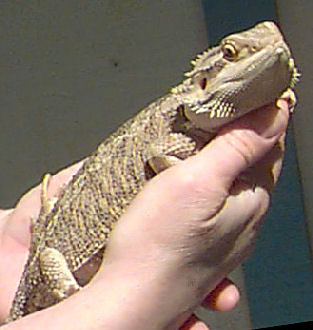The Ultimate Guide to White Leatherback Bearded Dragon Care
Introduction
Are you looking for an exotic pet to add to your collection? Have you considered getting a white leatherback bearded dragon? Bearded dragons are fascinating creatures that make great pets. They are easy to take care of and have unique personalities. In this guide, we will give you everything you need to know about white leatherback bearded dragon care.
What is a White Leatherback Bearded Dragon?
A white leatherback bearded dragon is a type of bearded dragon with a unique genetic mutation that results in a lack of scales on its back. This creates a more leathery texture to their skin, hence the name leatherback. The white coloring is also the result of a genetic mutation, making them stand out from other bearded dragon varieties.

Habitat and Tank Requirements
White leatherback bearded dragons are native to Australia, and their natural habitat is the deserts and woodlands in the eastern half of the country. In captivity, they need ample space to move around and explore. A tank that is at least 40 to 50 gallons in size is recommended. The tank should have a secure top to prevent escape and be equipped with a heat source, such as a basking lamp, and an ultraviolet light source.

The basking area of the tank should be between 100 and 110 degrees Fahrenheit, with the rest of the tank being in the range of 80 to 90 degrees. The ultraviolet light source is essential for calcium metabolism and vitamin D3 production. The tank should also have a substrate, such as reptile carpet or paper towels, to make cleaning easier. Avoid using loose substrates, such as sand or gravel, as they can be ingested and cause impaction.
Feeding and Nutrition
White leatherback bearded dragons are omnivores, which means they eat both plants and insects. Some of their favorite foods include crickets, mealworms, superworms, and roaches. You should also offer them a variety of greens and vegetables, such as kale, collard greens, butternut squash, and green beans.

It is essential to provide a balanced diet and avoid feeding them too many insects, as this can lead to obesity. You should also ensure that any insects you offer are appropriately sized for your dragon, as larger insects can cause choking.
Handling and Socialization
White leatherback bearded dragons can make great pets and are generally friendly and social. However, they do require proper handling to ensure their safety and well-being. When handling your bearded dragon, be gentle and support their body at all times. Avoid picking them up by the tail, as this can cause injury. Allow your dragon to come to you, and offer them treats or food to encourage them to be comfortable around you.

Socialization is also important for a happy and healthy bearded dragon. Letting them out of their tank to explore and interact with you can help them feel more comfortable and prevent boredom. However, always supervise them during their free time to ensure their safety and prevent escape.
Health Issues and Concerns
White leatherback bearded dragons are generally healthy, but, like all pets, they can develop health issues. Some common health concerns include respiratory infections, parasites, and impaction. Signs of illness include lethargy, loss of appetite, and abnormal behavior. If you notice any of these signs, it is important to seek veterinary care immediately.

Regular veterinary check-ups are also essential to ensure your bearded dragon’s health and well-being. Your veterinarian can check for signs of illness, provide advice on feeding and care, and address any concerns or questions you may have.
Conclusion
White leatherback bearded dragons are fascinating creatures that make great pets. With the proper care and attention, they can live long and happy lives. As with any pet, it is essential to do your research and ensure that you are prepared to provide the necessary care and attention before bringing a bearded dragon into your home. With this guide, you should have everything you need to get started on your white leatherback bearded dragon care journey.
